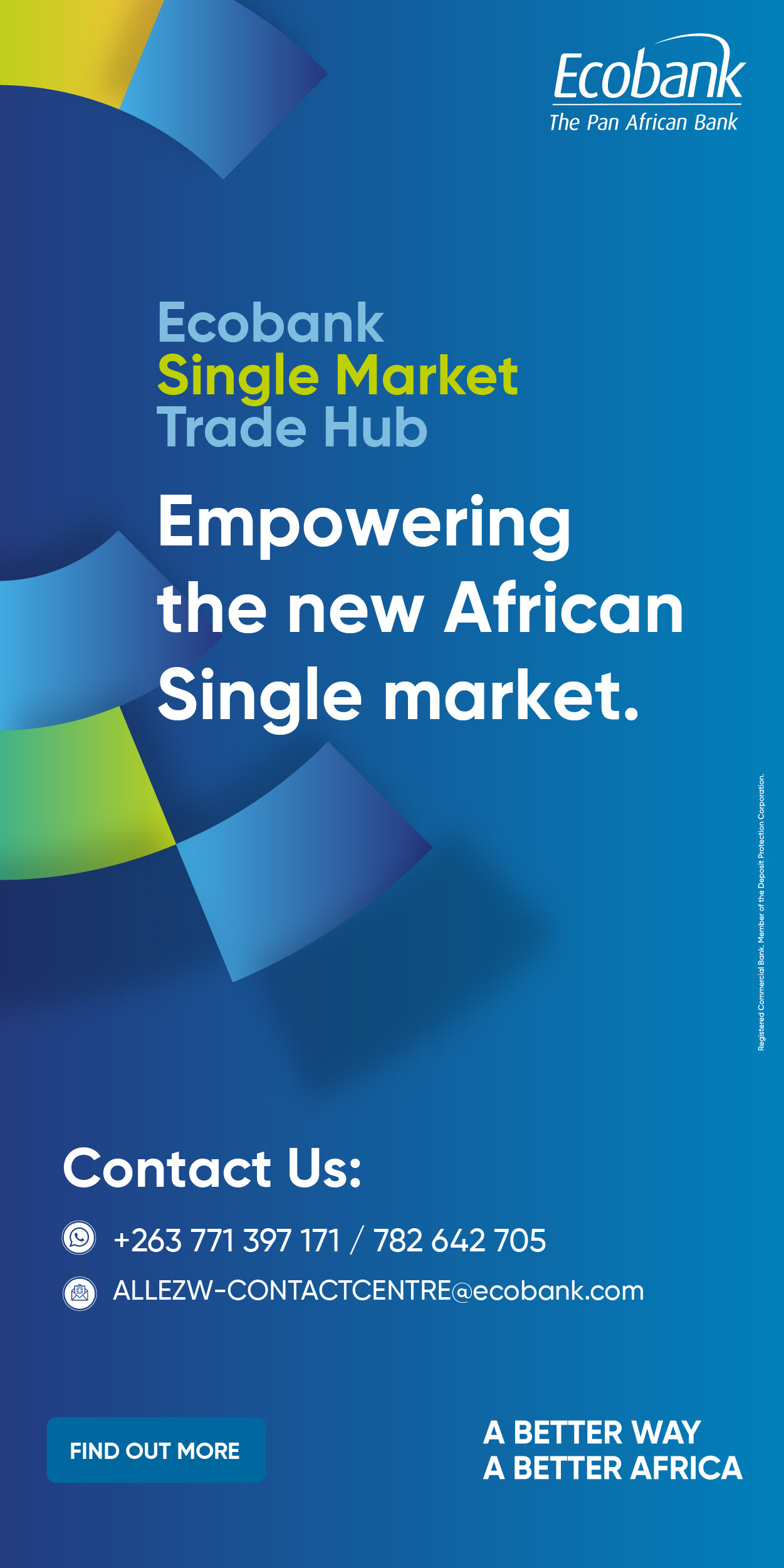High-productivity transportation investments increase connectivity and reduce congestion, by doing so they improve economic well-being.
The government of Zimbabwe has once again missed priority area targets set in the 2021 National Development Strategy1 (NDS1). In this column, we look at the area covering targets set for the transport and infrastructure development. Gazetted in January 2021, the NDS 1 was optimistic to deliver a modern transport and infrastructure development that is aimed to elevate the country to achieve an upper-middle income class by 2030.
Placed under NDS1 National Priority Area 4, transport and infrastructure recognises that the success of an economy largely depends on its ability of resuscitating infrastructural development which is sore to attract foreign and local investments.
One of the key measures of macroeconomics is economic growth, and logistics and transport play a key part in this.
To encourage economic growth, governments need to invest in logistics infrastructure such as roads, railways, airports and ports. Additionally, governments need state investment to be considerate of the environment and protect citizens’ rights to clean air, clean water decent places to live and work, as well as fundamental human rights and equalities
In a mixed economy, one of the ways of measuring the success of government’s influence on the economy is by comparing how it has affected logistics and transport growth.
An efficient transport system allows easier internal and external trade. It ensures movement of labour, goods and services between firms, and from firms to households. Additionally, it allows labour to easily move between firms, and products and services from firms to households which ultimately contributes to the gross domestic product of the state.
Because there is a direct correlation between transport infrastructure and utilities development and economic growth, government set ambitious targets for 2021 from energy supply, roads, rail, air transport water and sanitation. However, most of the targets were off the route.
According to data released by the Zimbabwe Coalition on Debt and Development (ZIMCODD), water insecurity had remained a challenge throughout Zimbabwe in 2021 especially in Chitungwiza, Harare and Bindura. Cities Mabvuku, Tafara, parts of Glen View and Budiriro 4 have gone for years without the unclean tap water. Areas such as Mbare has endured long term sewage leakages which have affected the right to a safer environment.
Problems relating to quality water supply had been contributed to dilapidated water piping infrastructure. In 2021, government set to increase the percentage of people using an improved drinking source to 79%. However, data released by ZIMCODD shows that only 68% was achieved. To achieve the 68%, government embarked on drilling boreholes in high density suburbs and encouraged citizens to drill deep wells if necessary. Tap water remained unclean to drink despite its scarcity. Even the boreholes drilled in the local cities where not enough to cater for the growing population which led to large queues. To date, water quality remains a concern in Zimbabwe. Revival of the piping infrastructure remained a history
In terms of road rehabilitation, the government initiated the Emergency Road Rehabilitation Programme to revamp the ailing road sector. In February 2021, government declared all roads a state of national disaster, a declaration that attested to poor road network and impediment to national economic growth.
Research indicates that Zimbabwe has a 98,000km road network made up of 89% unsurfaced gravel and earth roads. Sealed roads, mostly in urban areas and the main highways, constitute 18%, or 17,846 km.
Under NDS1, the government is target to increase the percentage of roads that meet the Southern Africa Transport and Communications Commission (SATCC) standards from 5% to 10% and to increase the number of kilometres of road network in good condition from 14,702 km to 24,500 km by 2025.
Percentage of roads network in good condition to meet SATCC standard was set at 6% while an ambitious target of 12% was set for percentage of road networks in good condition.
According to a report released by the government in June 2021, 515 km out of the targeted 13 313 km of road network had been pothole patched, while 4,115km had been graded, 874 km re-gravelled and 164km rehabilitated. As at December 2021, government claimed to have gravelled over 2,000kmwhile 6,627,9km have been graded with 701 drainage structures constructed or repaired and 184 wash-ways reclaimed. A total of 4,491.5km of drains had been opened, 6,141.2 km of verges were cleared, and work had begun on at least 4 794,8km.
The reconstruction of the Harare-Beitbridge highway became the anchor infrastructural development in 2021. By April 2022, Information Ministry reported that the Harare-Masvingo-Beitbridge road rehabilitation was on track with a total of 300 kilometres opened to traffic.
However, of the ambitious targets set, only 3% of road network set to meet SATCC requirements were achieved while only 11% for roads in good condition. Thus, government missed its target.
The chat below shows stats of buses and depots from ZUPCO against the total population
On transport availing, government banned combis to operate in 2020, this stressed to 2021. The banning of combis resulted in the monopolisation of transport system by the Zimbabwe United Passenger Company (ZUPCO). However, ZUPCO fell short of on capacity to provide sufficient and reliable public transport.
That gap leaves commuters stranded forcing them to wait as late as 9pm looking for transport. This has coincided with the rise in crimes such as rape, robbery and murder. Statistics released by the Zimbabwe Republic Police (ZRP) showed that rape and robbery cases between January to August 2021 increased by 14% and 103% respectively compared to the prior year.
On rail infrastructure, all set targets were missed. Track Quality Index, which is the proportion of track meet set in standards targeted at 58% for 2021 achieved 47%. Rail services pertaining to freight cargo moved was set at 4.5m with only 1.7m achieved. Intercity passenger volume moved set at 0.899m for 2021 only registered 0.231m. Commuter passenger volume, achievements for 2021 were not announced while number of locomotives wagons and coaches available remained unchanged at 32:3568:59.
According to ZIMCODD, data for airport infrastructure achievements was not released. This was the same as data for national fuel retail capacity and power transmission and distribution lines constructed in kilometres.
Therefore, Zimbabwe’s infrastructure, transport and utilities development remained below 2021 targets. Transport and infrastructure development should be given priority as they don’t only affect economic prowess but also the living standards of Zimbabwe. Government should take a bold step to correct the poor service delivery to accelerate economic growth.
ZIMCODD recommended that the government should increase the number of ZUPCO busses amid the ban of combis and consider innovative financing through public-private partnerships to cater for transport shortages for intra-and inter-city movements.
UNECA classified Zimbabwe among the worst countries with the worst roads nationwide. Therefore, government should speed-up the construction and refurbishment of the roads. Sound transportation investments lower the costs of moving people and goods that in turn buoys economic productivity, which roughly can be measured as the output of goods and services per dollar of private and public investment. And improved productivity leads to a higher standard of living.
Because productivity is a central component of economic growth, it should be of major concern when assessing the value of transportation expenditures. It is important to focus on improving productivity even when policymakers strive to serve other important long-term transportation objectives, such as improving safety, energy independence, and environmental sustainability.
High-productivity transportation investments increase connectivity and reduce congestion; by doing so they improve economic well-being. Short-term job creation, while vitally important to economic recovery, should not cause us to ignore the longer-term view.





